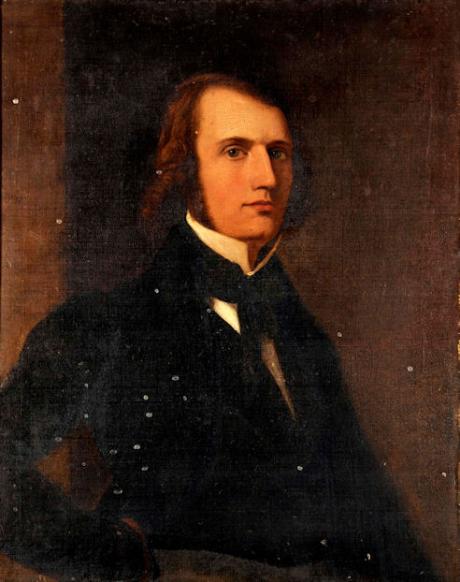The Luttrell Family are an ancient family from Devon. The family have lived at Dunster Castle since the end of the 14th century when they purchased Dunster Castle from the De Mohuns family. The castle was expanded several times by the Luttrell family during the 17th and 18th centuries; they built a large manor house within the Lower Ward of the castle in 1617, and this was extensively modernised, first during the 1680s and then during the 1760s. The medieval castle walls were mostly destroyed following the siege of Dunster Castle at the end of the English Civil War, when Parliament ordered the defences to be slighted to prevent their further use. In the 1860s and 1870s, the architect Anthony Salvin was employed to remodel the castle to fit Victorian tastes; this work extensively changed the appearance of Dunster to make it appear more Gothic and Picturesque. Following the death of Alexander Luttrell in 1944, the family was unable to afford the death duties on his estate. The castle and surrounding lands were sold off to a property firm, the family continuing to live in the castle as tenants. The Luttrells bought back the castle in 1954, but in 1976 Colonel Walter Luttrell gave Dunster Castle and most of its contents to the National Trust. As of 2011 the castle is operated by the trust as a tourist attraction; it is a Grade I listed building and scheduled monument. Henry's son, John, inherited the castle in 1780, but when his son, also called John, inherited in 1816 he chose to live in London instead, opening up Dunster Castle to the public. By 1845 the castle appeared to visitors to be past its prime: with only two of John's sisters living there and no horses or hunting dogs left in the castle grounds, the remaining servants had little to do. John's brother Henry inherited in 1857, but he too lived in London rather than at Dunster. George Luttrell inherited the castle in 1867 and began an extensive modernisation, backed by the considerable income from the Dunster estates – in a period of agricultural boom in England, the estates were producing £22,000 in revenue a year (£1.49 million at 2010 prices). It was fashionable during the mid-Victorian period to remodel existing castles to produce what was felt to be a more consistent Gothic or sometimes Picturesque appearance and George, a keen historian, decided to follow this trend at Dunster; in the process, he also hoped to accommodate the larger household and facilities required for a 19th-century landowner: by 1881, the castle required 15 "living-in" servants alone. He employed Anthony Salvin, a noted architect then most famous for his work at Alnwick Castle, to carry out the work between 1868 and 1872 at a total cost of £25,350 (equivalent to £1.76 million as of 2010). Salvin aimed to create a castle that would appear to have grown up organically over time, but still appeal to Victorian aesthetic taste. Accordingly, a large, square tower was built on the west side of the castle and another smaller tower on the east, both creating additional space but also making the castle deliberately asymmetrical. The 18th-century chapel at the rear was demolished and replaced with another tower, alongside a modern conservatory. A variety of windows in the styles of different historical periods were inserted in the walls, while modern Victorian technology, including gas lighting-supported by a gas plant in the basement-central heating and new kitchens were installed within the castle. The roof of the Great Gatehouse was raised to create a more uniform sequence of battlements, and a large hall for gatherings of the local farmers installed.] A new wing of servants' quarters and offices were sunk into the hill, spread over two floors leading away from the main part of the mansion. Internally, Salvin knocked through existing rooms to create the Outer Hall, a new gallery on the first floor, a billiard room, a new library and a drawing room. Much of the wooden 17th-century panelling in the parlour and the hall had to be stripped out as part of the renovations. As part of his work, Salvin appears to have used a number of rolled wrought-iron beams to span the resulting structural gaps in the building, an advanced use of that technology for the time. The house was refurnished with newly bought 16th and 17th-century artwork, two brass Italian cannons and a stuffed polar bear. Alexander Luttrell, who inherited Dunster Castle in 1910, chose to live at East Quantoxhead instead, and it was left empty until his son Geoffrey reoccupied the castle in 1920, redecorating some of the rooms in a contemporary style and building a polo ground alongside the castle. The castle and the surrounding countryside at this time was very popular with the Luttrells for fox hunting and shooting. During the Second World War the castle was used as a convalescent home for injured naval and American officers between 1943 and 1944.
English
School 19th
Century
Portrait of a member of the Luttrell Family, thought to be Colonel Francis Luttrell (1792–1862)
Portrait of Colonel Francis Luttrell
oil on canvas
76.20 x 63.50 cm. (30 x 25 in.)
£2200
Notes

